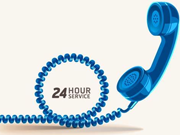
Counterfeit lithium-ion batteries are increasingly common and dangerous in today’s market. This comprehensive guide explains how to distinguish between genuine lithium-ion battery packs and counterfeit products—helping you protect your devices, investments, and safety.
Authentic lithium-ion batteries from OEMs undergo rigorous safety testing and bear recognized certification marks such as UL, CB, and CE.
Counterfeit cells often lack real testing and may even fake certification logos—making them unsafe and unreliable. Without essential safety features such as PTC or PCB protection, fake batteries can experience thermal runaway, fire, or explosion during overcharging or short circuits.
UL Certification Database: https://productiq.ulprospector.com/
CE Marking Official Guide: https://ec.europa.eu/growth/single-market/ce-marking/
Look for:
High-quality packaging with clean seams, precise fonts, and accurate logos.
Clear production dates and serial numbers.
Warning signs of counterfeit batteries:
Spelling errors, blurry labels, bent stickers, inconsistent fonts.
Missing or incorrect production information.
Top brands provide unique QR codes or serial numbers tied to an official database.
Genuine: Scans cleanly, reveals correct batch info.
Counterfeit: Unreadable, duplicated, or mismatched scan results. Multiple failed scans are a red flag.
Counterfeits often use cheaper materials and may feel lighter or fragile.
Genuine cells: Consistent weight, sturdy casing, copper/tin-plated copper contact pads.
Fake cells: Lighter, silver contacts, poor build quality.
If possible, test under controlled conditions:
New genuine cells: ≥95% capacity when new; ≥60% after 28 days.
Cycle life: Hundreds of cycles before significant degradation.
Counterfeits may overheat, lose capacity quickly, or discharge abnormally.
Buy only from authorized dealers or OEMs.
Avoid:
Third-party marketplaces with unclear sourcing.
Unrealistic capacity claims (e.g., “9800mAh 18650 battery”).
Cutting-edge research uses machine learning (e.g., DCAuth, EISthentication) to verify genuine cells by analyzing internal electrical signatures—achieving nearly 99% accuracy in some models.
Counterfeit lithium-ion batteries can cause:
Fire or explosion
Device damage
Injuries
Legal liability
Studies of over 60 incidents involving hoverboards and mobile phone battery packs have shown severe injuries and millions in damages.
By following these verification steps—focusing on certification, visual inspection, performance testing, and secure sourcing—you can reduce risks and ensure you are using safe and authentic battery products.
If your business requires custom lithium-ion battery packs, partner with a trusted OEM supplier to guarantee quality and safety.

18650 Battery 3.7V 2600mAh Wholesale Lithium Ion Battery 500 times cycle life

18650 Li-Ion Battery 14.8V 2600mAh Lithium Ion Battery Pack with BMS

AS18500 Battery 14.8v 2000mAh Lithium-Ion Battery Pack China Manufacturer Price

Rechargeable Li-Ion Battery Packs Supplier 18650 7.4v 2000mAh UL2054 Certification
Email:aspowercell@szaspower.com
